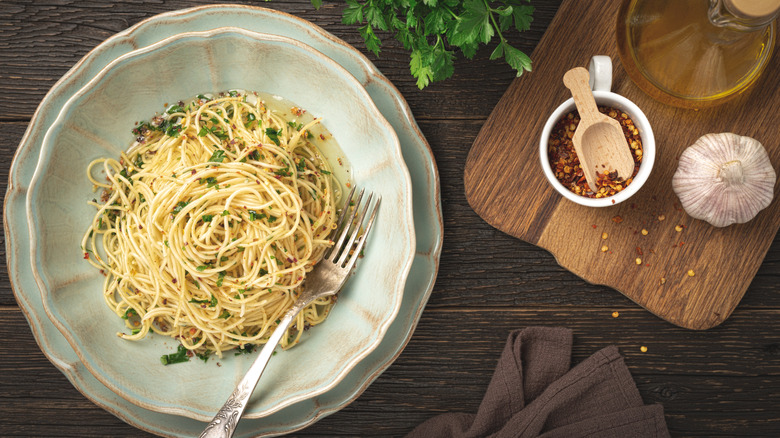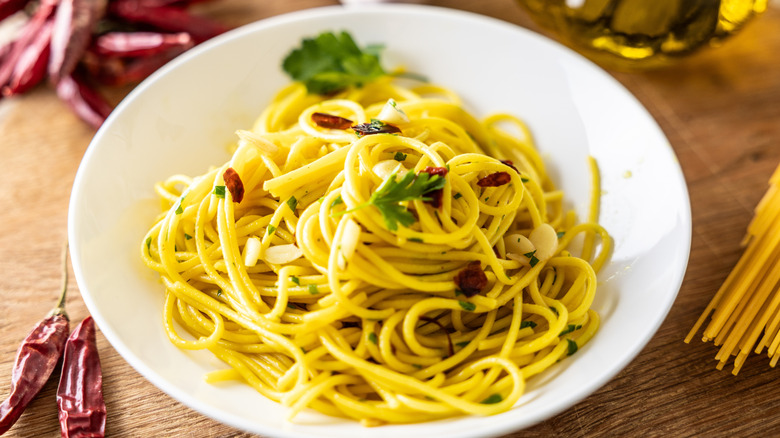For Next-Level Aglio E Olio, Upgrade Your Garlic
Garlic lovers rejoice as we share our quick and easy tips to level up an Italian classic known and celebrated for its simplicity and taste. Aglio e olio, which translates to "garlic and oil," is a quintessential dish that features affordable, easily accessible ingredients with long shelf lives: spaghetti, garlic, and olive oil. While the traditional recipe calls for thinly sliced garlic sautéed in olive oil (which is the key to imparting the bold garlicky flavors we know and love about the dish), you can add additional layers of complex flavors with different garlic preparations and extra ingredients. One such extra-ingredient example is its close sibling, aglio olio e peperoncino, which includes chili flakes for a kick of heat.
There are several ways to get creative with this classic recipe by playing around with how you prepare your garlic. The intensity of garlic's flavor depends on how you chop it, for example, with finely minced fresh garlic rendering a stronger flavor compared to jarred varieties or whole garlic cloves. You can also hone in on expert-approved garlic-cooking methods, including choosing the ideal garlic variety, avoiding overcooking your garlic, and, most importantly, experimenting with different cooking methods such as roasting.
Two ways to upgrade garlic and aglio e olio's origins
Roasting a whole head of garlic until the cloves turn golden and creamy makes the cloves easy to spread into the pasta; this infuses a deep, caramelized sweetness and a mouthwatering contrast to any heat you may have added with chili flakes. You can also stir gently fried, golden cloves of garlic into your final dish for an inventive way to add more flavor and texture. Whichever route you tred when preparing garlic, the result is a sophisticated take on aglio e olio that maintains its desirable simplicity with a more nuanced garlic experience in each bite.
Like many of our favorite pasta dishes with fascinating origin stories, the humble aglio e olio has a history that can be traced back to 19th century Naples, Italy. It began as a dish categorized as "cucina povera," meaning it was a recipe that originated from Italy's peasant communities and is emblematic of the resourcefulness of Naples' working class. Some of the most iconic Italian dishes we know and love were born out of necessity, utilizing local and seasonal produce while minimizing food waste. Aglio e olio is no different, but it can be taken to further heights with just a bit more time and a lot more garlic.

